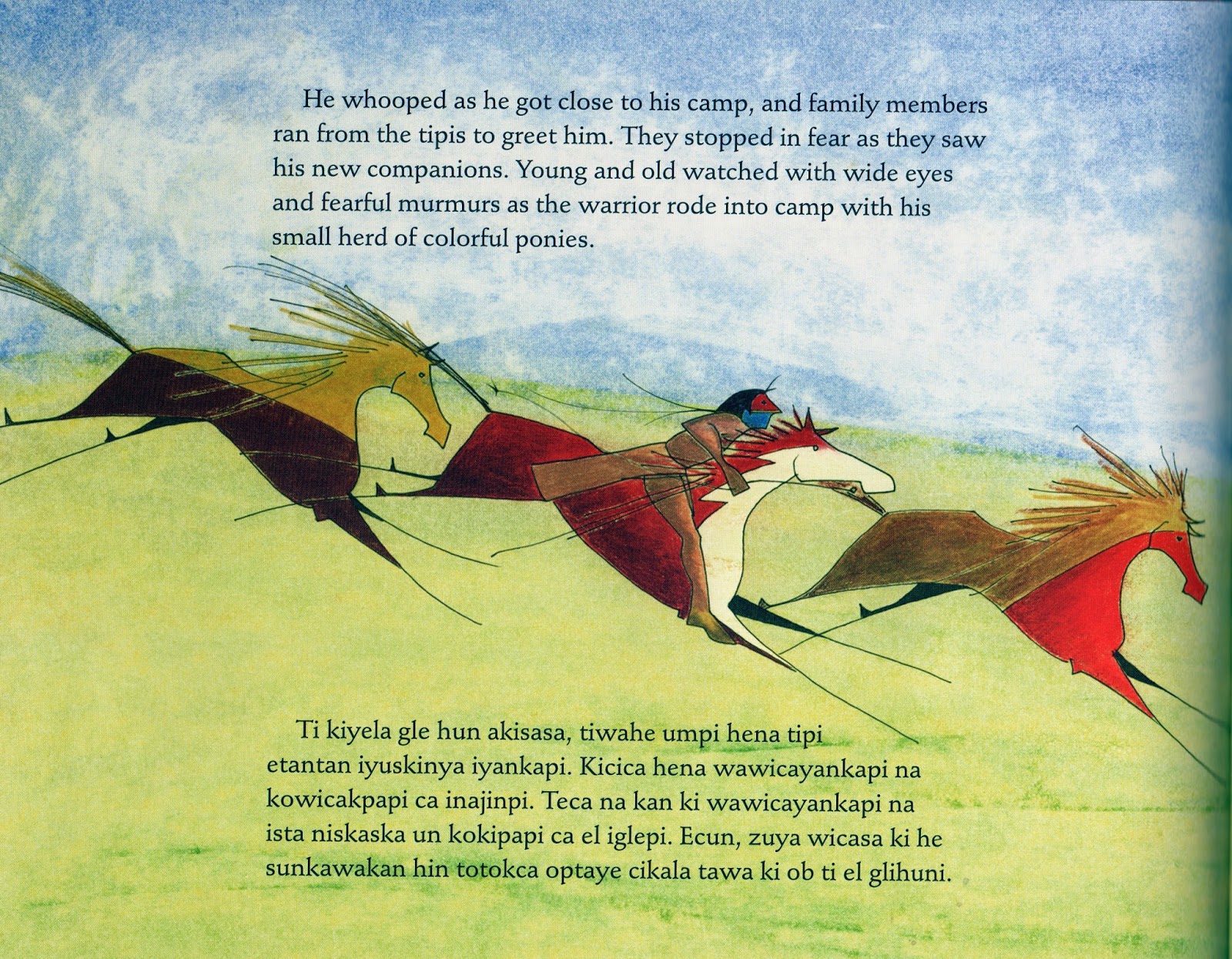One of the things I look for when reading a traditional story rooted in a Native Nation is an attribution of where the story was heard, and from whom. In Tasunka: A Lakota Horse Legend, Montileaux gives us that information right away in a two-page introduction.
Montileaux heard this story from Alex White Plume, a Lakota elder and storyteller. In a radio interview, Montileaux says more about the story, assuring readers that he is retelling the story as it is told. Initially, White Plume was reluctant to have a traditional story put into print. When he saw what Montileaux had done, he gave him his blessing. In the radio interview, Montileaux also says that Agnes Gay, the woman who did the Lakota translation, works as an archivist at the Oglala Lakota College. She, too, verified the integrity of Montileaux's telling of that story.
 |
| Photo credit: Joel Ebert, Capital Journal, South Dakota |
Montileaux's style reflects the ledger art of the 1800s, developed by Plains Indians who drew on ledger pages using pencil, ink, and watercolor. The photo shown here is of Montileaux working in his studio (link to story: A Lakota Legend, Flying Off the Pages).
A third quality of the book that marks it as distinctive is that it is a bilingual text. Above, I noted that Agnes Gay did the translation. Throughout the book, readers can see/read the story in Lakota. Here's a scan of one of my favorite pages:
At that point in the story, the young man on the horse is riding into camp after having spent many months away, looking for and training horses. The horses were new to the people and regarded as a gift from their creator. With them, the people were able to do more than they could before. But, they abused that gift, using it to dominate other peoples on the Plains. The gift was taken away from them. Hundreds of years later, horses return with the conquistadors.
Tasunka: A Lakota Horse Legend is a fascinating story that pays tribute to the stories Native peoples have told for hundreds of years.
I highly recommend
Tasunka: A Lakota Horse Legend.
Montileaux is an enrolled member of the Oglala Lakota Nation. Tasunka: A Lakota Horse Legend is published by the South Dakota State Historical Society. Support small bookstores by getting a copy from Birchbark Books.
0 Comments on Donald F. Montileaux's TASUNKA: A LAKOTA HORSE LEGEND as of 1/1/1900
Add a Comment




